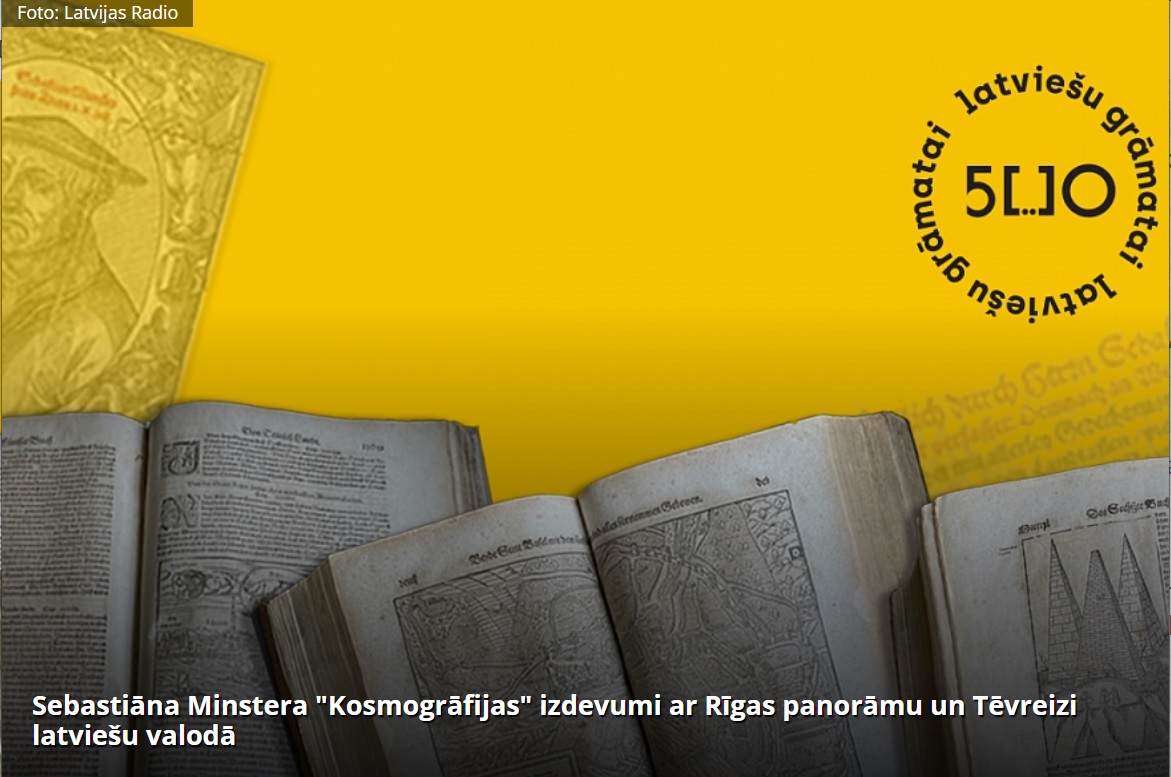More about the cycle of events can be discovered at https://www.gramatai500.lv/ and for more about the Latvian National Library and its constantly changing exhibitions and collections, visit: https://www.lnb.lv/.
Münster's 'Cosmographia', a 16th century bestseller across Europe
Cosmographia is the life's work or opus magnum of Sebastian Münster (1488–1552), professor at the University of Basel, humanist scholar, theologian, geographer, historian, linguist, astronomer and cartographer.
It is truly one of the great books that changed the world and won the respect of readers both in its own time and in later centuries; it established a new tradition of looking at the world, geography and history. Cosmographia also provides information on anthropology and is quite open-minded in the way he described the lifestyles and the habits and virtues of the local people.
Münster's life story is typical of the Reformation era: he initially had a Catholic education, entered the Franciscan Order, was ordained a priest, studied and worked at several German universities (including Heidelberg), then converted to Protestantism (1529) and built an academic career at the University of Basel.
Münster's descriptions are at once scholarly and fictional and were addressed to both the daily reader and the scholar; the former is amused and entertained the latter – encouraged to undertake new research.
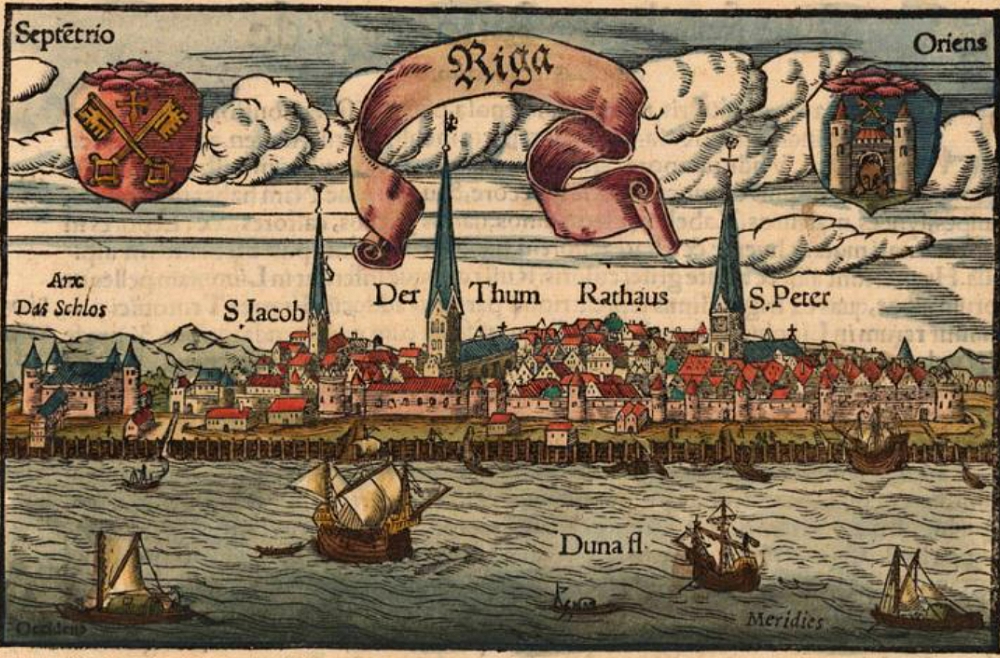
Many of Münster's descriptions have become model stories, even later mythologised. Cosmographia contains both reliable descriptions of cities based on factual information and landscapes captured in situ as well as descriptions of distant countries and places never seen before, accompanied by images of fantastic magical beasts and monstrous creatures.
The Greek term "cosmography” or description of the universe, used in the title has become a generic term inextricably linked to Münster personally. His most important works were published in Basel and printed by Münster's stepson, the printer Heinrich Petri (1508–1579). With dozens of reprinted editions, and richly illustrated with maps and woodcuts, the Cosmographia, in six parts, is one of the most outstanding and successful book publishing ventures of the 16th century. Between 1544 and 1628 the work was reprinted every second or third year, and each time it was expanded and improved. 27 editions were published in German, with a total of 50 000 copies printed and distributed. Eight editions were published in Latin, with a total of 10 000 copies. The book was also immediately translated into French, Italian, English and Czech languages.
All of Europe was reading Cosmographia in the 16th century
The book is impressive: while the first edition had 660 pages, the last German edition was already double that size (1800 pages). In Latvia today, there are four editions of the Cosmographia printed in different years (1614, LUAB Academic Library of the University of Latvia = ALUL), as well as some individual pages with woodcuts (LNB).
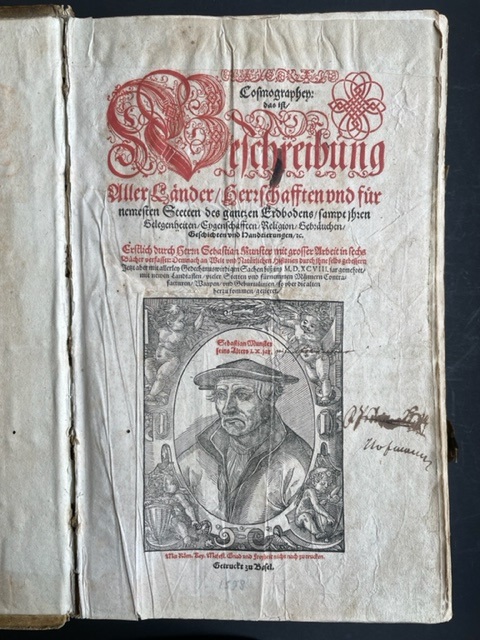
Sebastian Münster (1488–1552). “Cosmographia is the description of all the lands, countries and greatest cities of the world, which also tells of their characteristics, religion, customs, events, history. It was first prepared in the form of six books by Mr. Sebastian Münster in a monumental work, and afterwards revised by him with stories about the world and nature. The current 1598 revised edition includes noteworthy events, it is embellished with new maps, numerous views of towns and portraits of notable men, coats of arms and family profiles, from antiquity to the present". Basel: Petri, 1578? 15th German edition of Münster's Cosmographia. Portrait of Sebastian Münster on the title page. Woodcut. 1578?
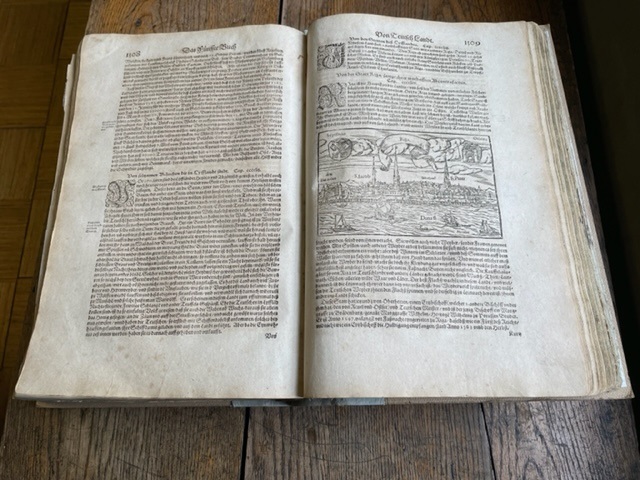
A panoramic view of Riga and the Lord’s Prayer, recorded in Latvian by the German writer and chronicler Hans Johann Hasentöter (1517?–1586?), first included in the 1550 edition of Cosmographia, simultaneously in both the German and Latin editions. The description of Livonia in the first edition of Cosmographia (1544) was based on the information provided in 1541 by Nikolaus Glossenus (c. 1510–1547), a clergyman and former superintendent of Tallinn. The description of Livonia was continually supplemented, substantially modified and updated in subsequent editions. Woodcut. 1614.
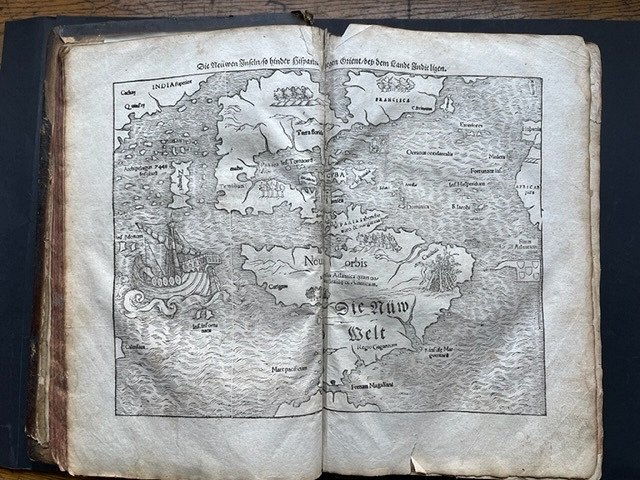
"The New Islands, belonging to Spain to the east, are located near India". Münster created the first map of the New World, or North and South America. It was first printed in Münster's Geographia (1540) and also included in the first 1544 edition of Cosmographia. He also included regions inhabited by giants, cannibals etc. Münster made use of reports published by Christopher Columbus and Amerigo Vespucci and other sources. Woodcut. 1572?
